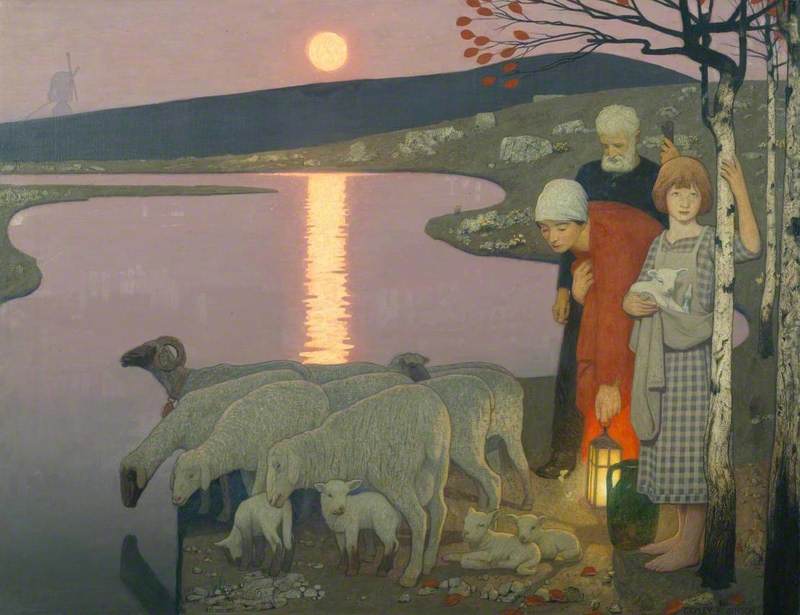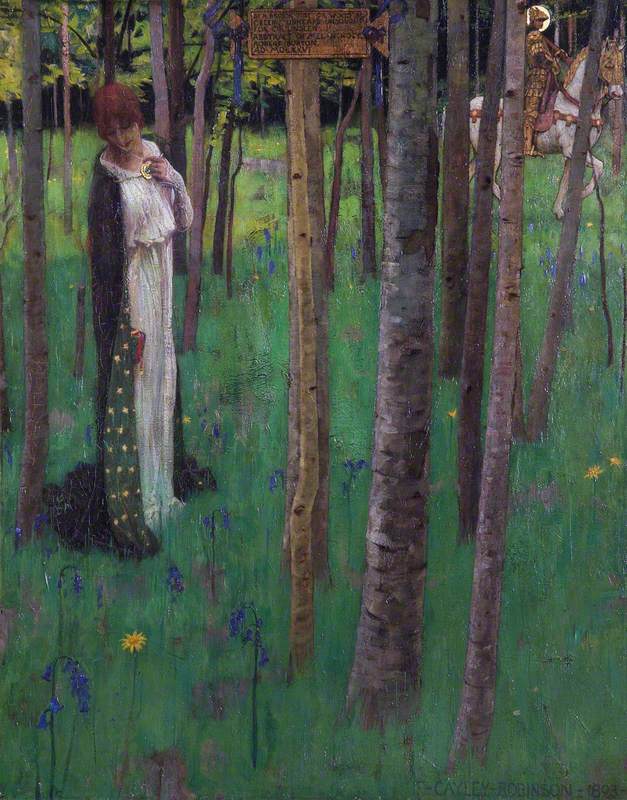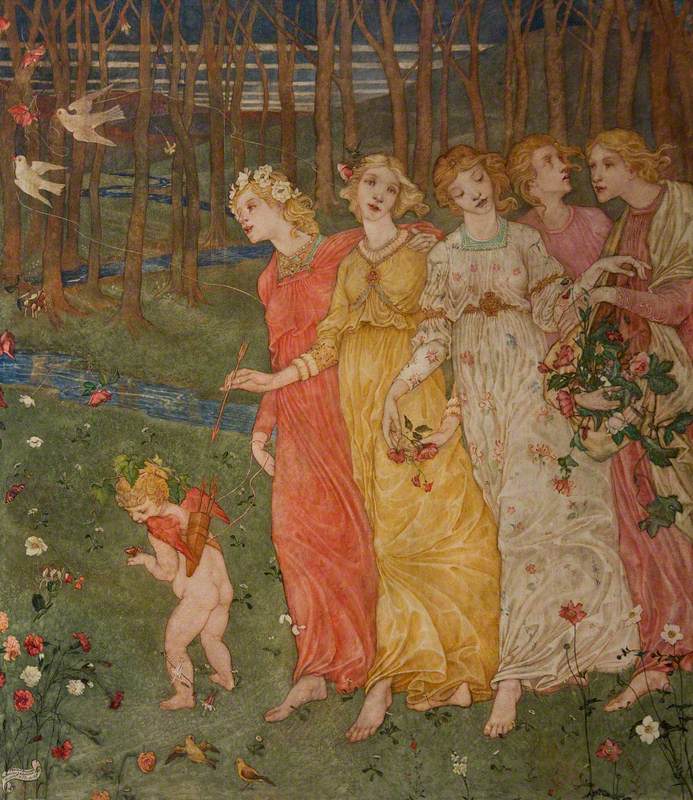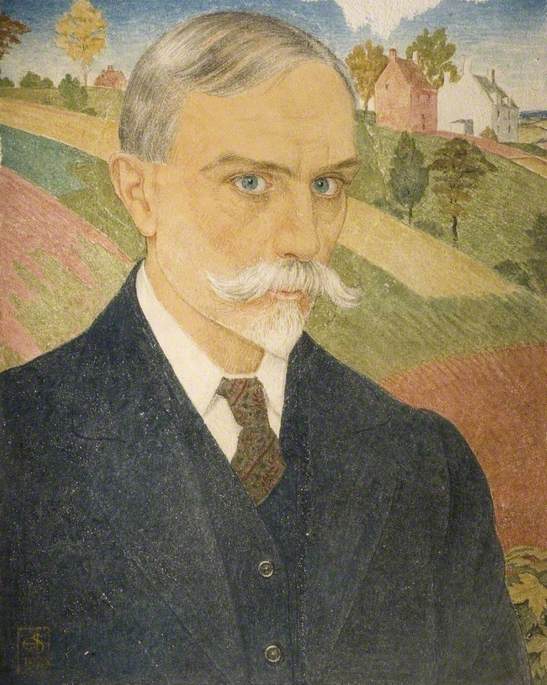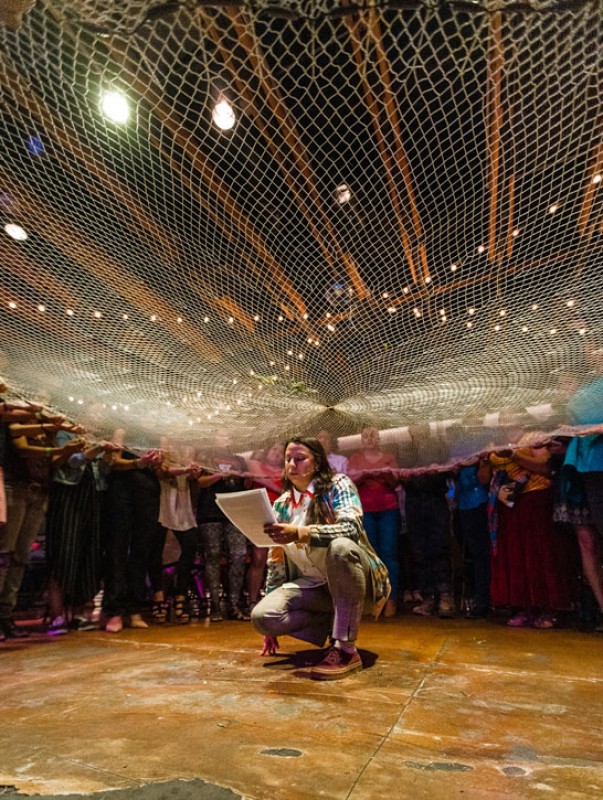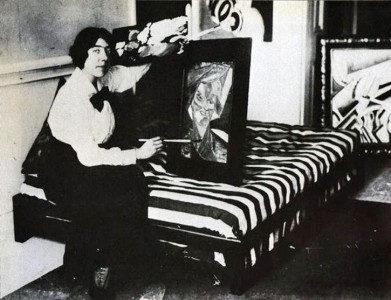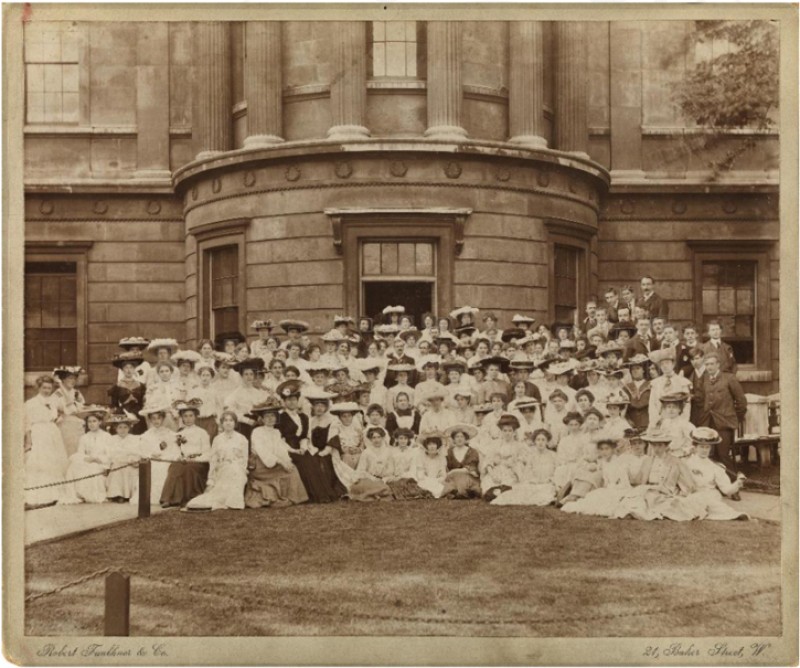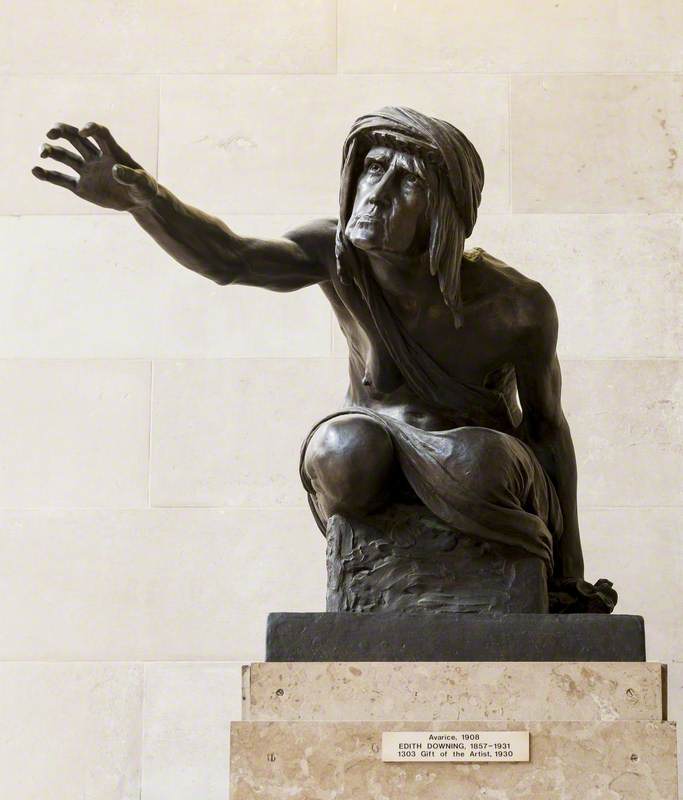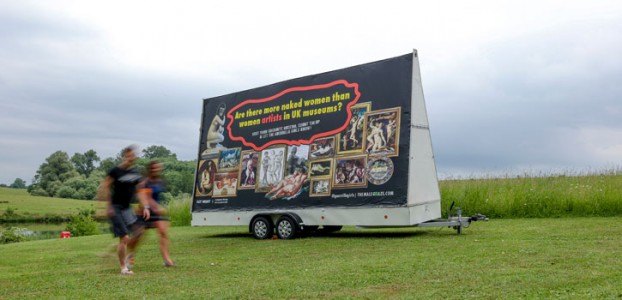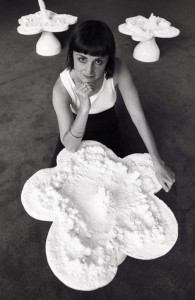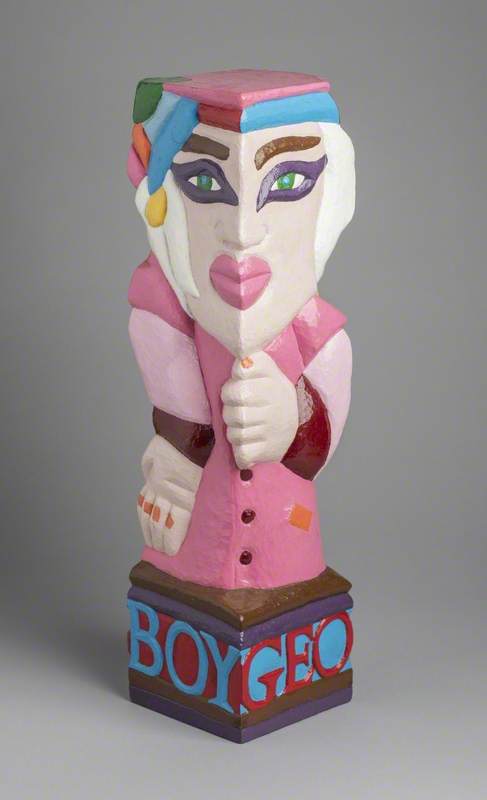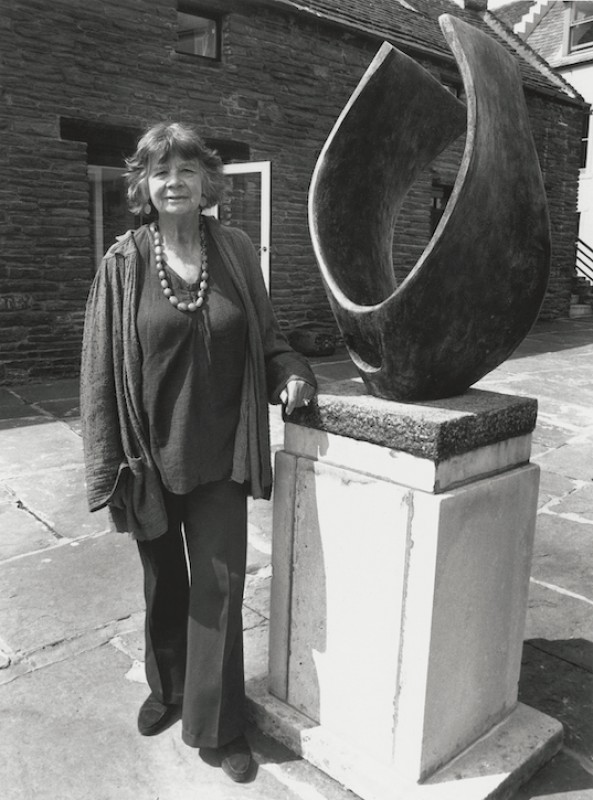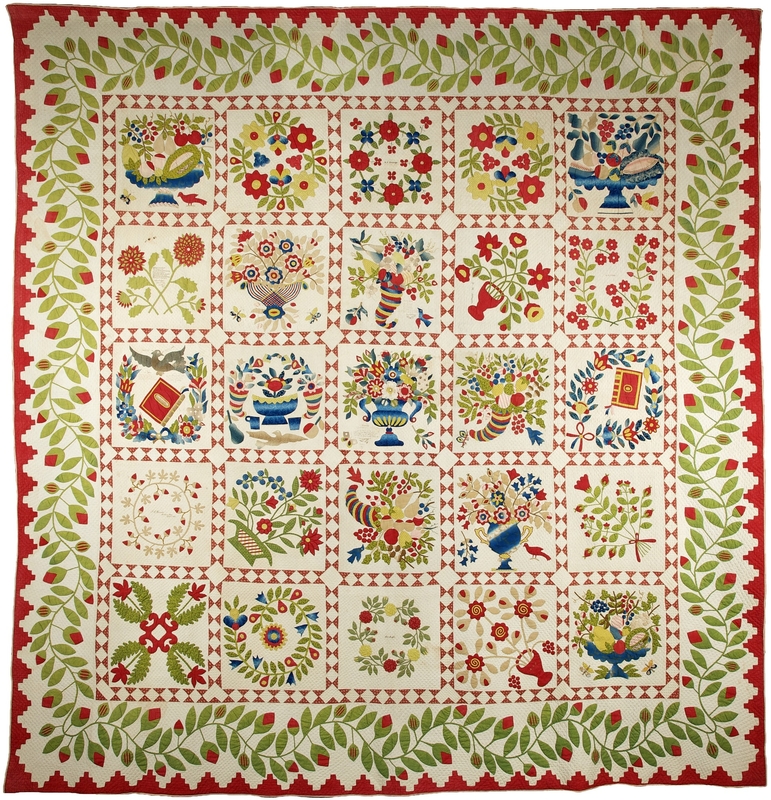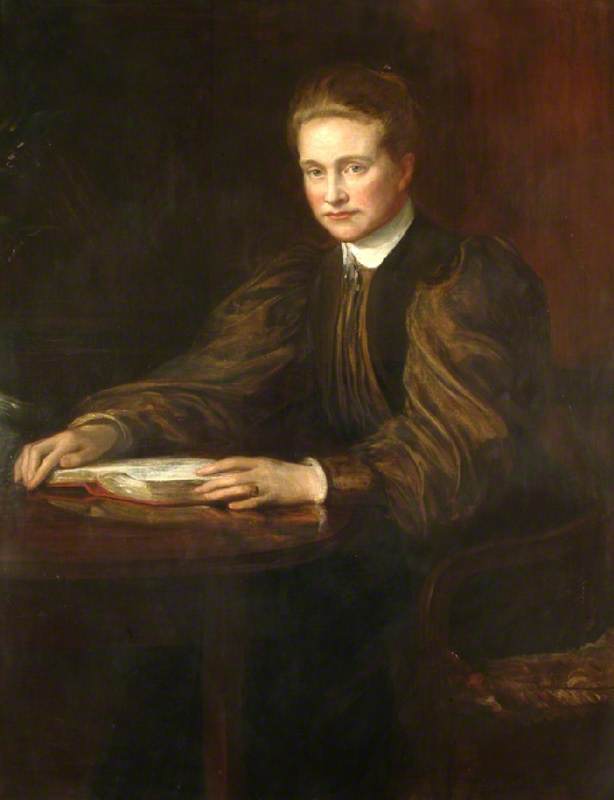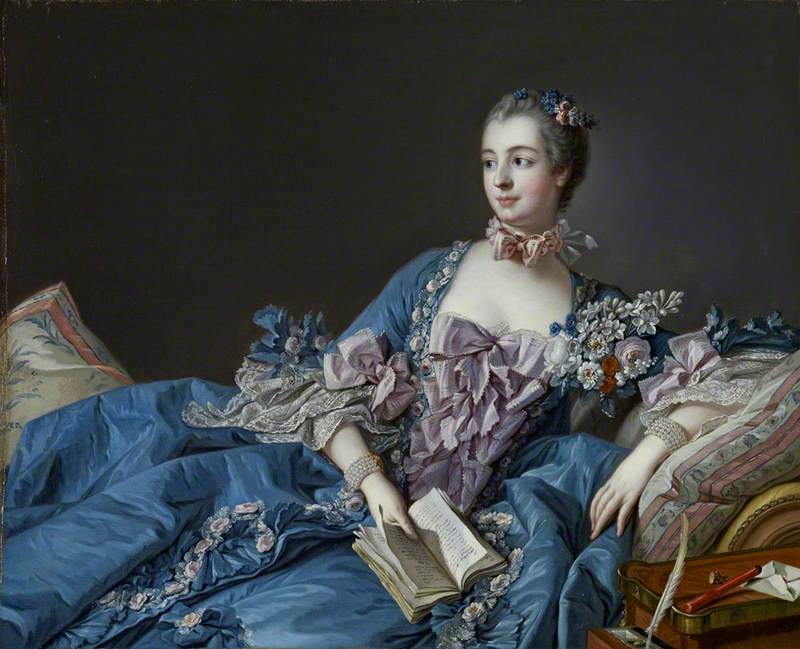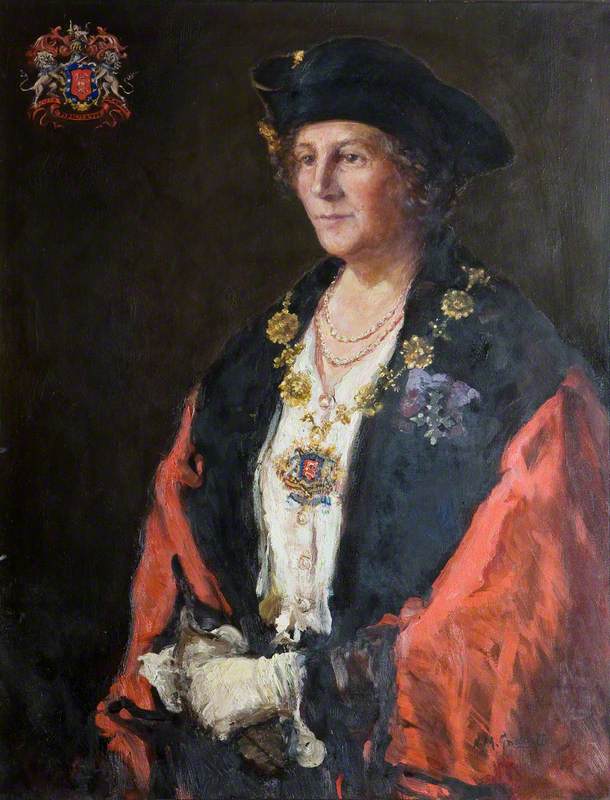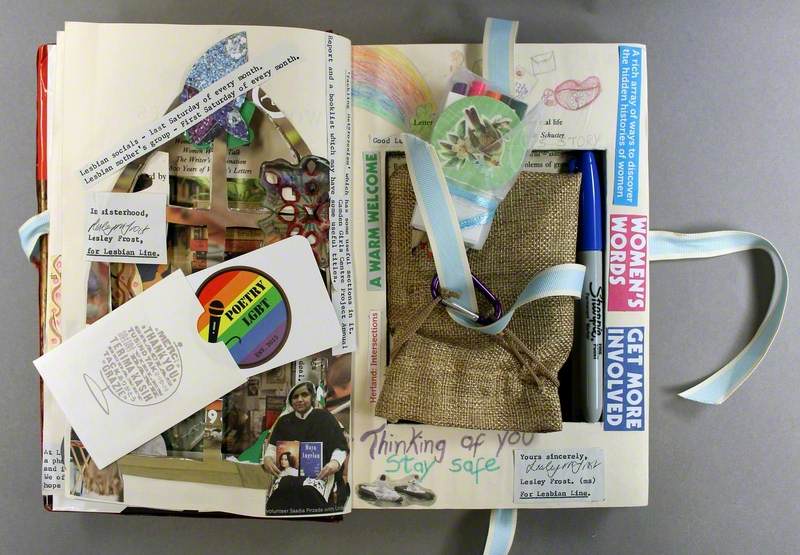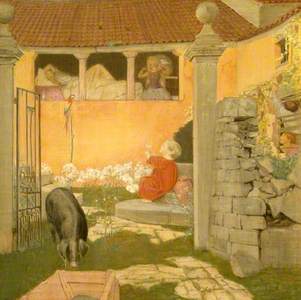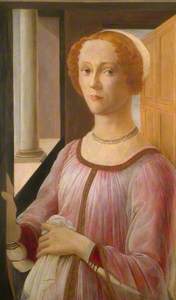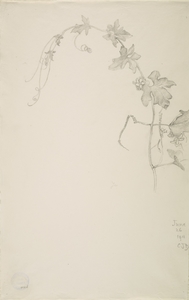When Bedford College merged with Royal Holloway College in 1985, the latter acquired the eclectic collection of artist, activist, and collector Christiana Herringham (1851–1929). Encompassing 170 of her own drawings, watercolours and paintings, photographs of her travels to India, works by contemporary women artists, and arts and crafts from Japan, India and China, the collection reflects Herringham's own wide interests.

Image credit: Royal Holloway, University of London
Head of the Magdalene (after Sandro Botticelli)
Christiana Jane Herringham (1852–1929)
Royal Holloway, University of LondonA respected artist during her lifetime, she was also well regarded for her art historical expertise. The artist Walter Sickert described her as 'the greatest living critic'. By the 1980s, however, her name had faded into obscurity. After Royal Holloway acquired the collection, most of the works were put into storage and forgotten until they were rediscovered in 2014. Since then, new research has uncovered a wealth of information, helping bring to light this complex and fascinating woman.
Christiana Jane Herringham was the daughter of Thomas Wilde Powell, a stockbroker and patron of the Arts and Crafts Movement, who instilled a strong sense of philanthropy in his children. By 1871, Herringham was enrolled at the Female School of Art in London. However, her studies were soon interrupted by her mother's death. As the eldest of nine children, Herringham became responsible for running the household and helping care for her siblings.
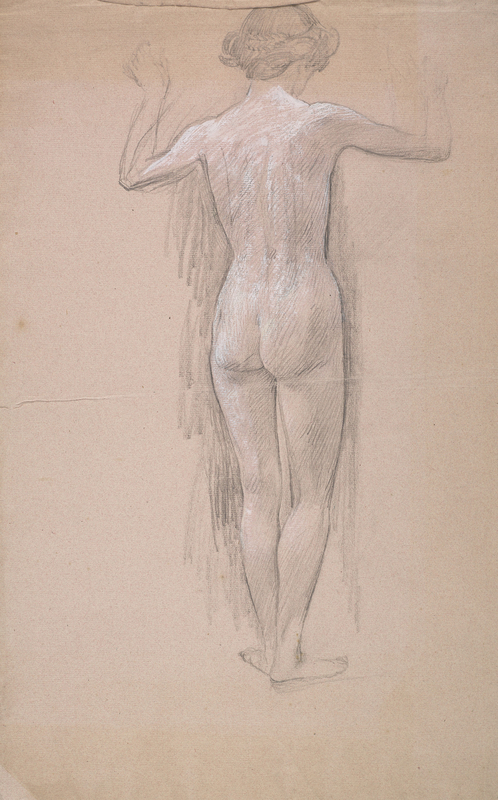
Image credit: Royal Holloway, University of London
Life Study: Woman Turned Away from Viewer with Raised Arms late 19th C–early 20th C
Christiana Jane Herringham (1852–1929)
Royal Holloway, University of LondonDomestic responsibilities do not appear to have completely hindered her ambitions, though, as later in the decade she attended classes at the newly opened Slade School of Fine Art. The school was considered groundbreaking for admitting women on the same terms as men. Many of the artists in Herringham's circle trained at the Slade, including Mary Lowndes, Margaret Gere, and Mary Sargant Florence.
Yet, despite the school's liberal leanings, female students were still not permitted to draw the nude figure in their life classes – a key aspect of any aspiring artist's training. Herringham's life studies in Royal Holloway's collection suggest she managed to circumvent these restrictions, possibly by attending private classes – as some other women did – or during the time she spent studying in Paris.
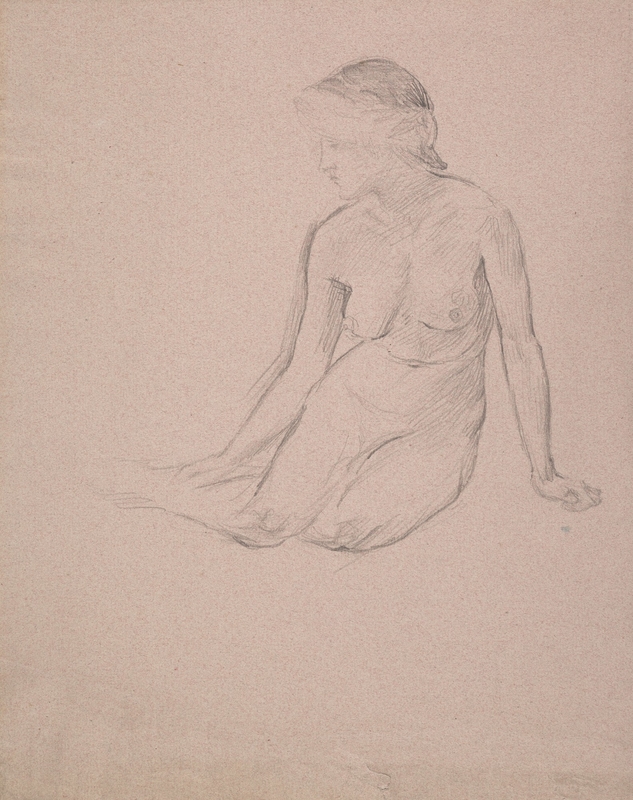
Image credit: Royal Holloway, University of London
Life Study: Seated Woman with Her Legs to the Side late 19th C–early 20th C
Christiana Jane Herringham (1852–1929)
Royal Holloway, University of LondonIn 1880, she married the physician Wilmot Herringham, which was followed by the birth of two sons: Christopher in 1881 and Geoffrey in 1883.
She seldom dated her work and so it is difficult to establish the extent to which motherhood impacted Herringham's artistic output, but letters by her husband reveal that she continued to paint. Throughout the 1880s, there is evidence of her exhibiting her work only once, with the Manchester Society of Women Painters.
It may have been through the Manchester Society of Women Painters that Herringham first met Annie Swynnerton, who was one of the organisation's founders. Herringham became a patron of Swynnerton's work.
In 1889, she commissioned Swynnerton to paint a portrait of her sons, and in 1908 she gave Swynnerton's Oceanid to Cartwright Hall Gallery in Bradford. She also supported other women artists, including Ethel Webling and Margaret Gere, by commissioning and purchasing their work.
Recognising the obstacles women artists faced, in 1907 she became a founding member of the Women's Guild of Arts. Established by May Morris (the daughter of William Morris), it provided a space for women to network, learn, and exhibit their work.
Herringham may have alternatively met Swynnerton through their mutual friendship with the suffrage campaigner Millicent Garrett Fawcett. In 1882, Herringham and Millicent's sister, Agnes, were co-founders of the Ladies' Residential Chambers Co. – an organisation which built flats for the new class of working middle-class women. Herringham's close relationship with the family is evidenced by the portrait she drew of Millicent and Agnes' cousin, Rhoda.
Like the Garrett family, Herringham was an ardent supporter of female suffrage. She campaigned on the behalf of numerous societies; not only Fawcett's NUWSS, but also as a member of the WSPU, the Women's Freedom League, and the Tax Resistance League. As a member of the Artists' Suffrage League, she embroidered banners, which were used in the movement's large-scale processions.
In 1893, Herringham's world was shattered by the death of her eldest son, Christopher. He was eleven years old.
In the years that followed, Herringham threw herself into work to distract from her grief. She had experimented with egg tempera since the 1870s, but now committed herself to the medium with a new intensity. She began work on a new English translation of Cennino Cennini's Il Libro dell Arte – a fourteenth-century Italian treatise on how to mix tempera paints, prepare panels, and gild frames. Published in 1899, Herringham's translation also included notes on her own experiments and advice on how artists could practically apply historical methods in their own work.
Her translation coincided with the emergence of tempera's revival among a group of artists seeking an alternative to mass-produced oil paints. Herringham's publication spearheaded the burgeoning revival, which culminated with her co-founding the Society of Painters in Tempera in 1901 alongside Joseph Southall.

Image credit: Royal Holloway, University of London
Smeralda Bandinelli (after Sandro Botticelli)
Christiana Jane Herringham (1852–1929)
Royal Holloway, University of LondonShe applied her knowledge of tempera by painting careful copies of early Renaissance paintings by artists such as Sandro Botticelli, in addition to creating her own depictions of flowers and cathedrals.
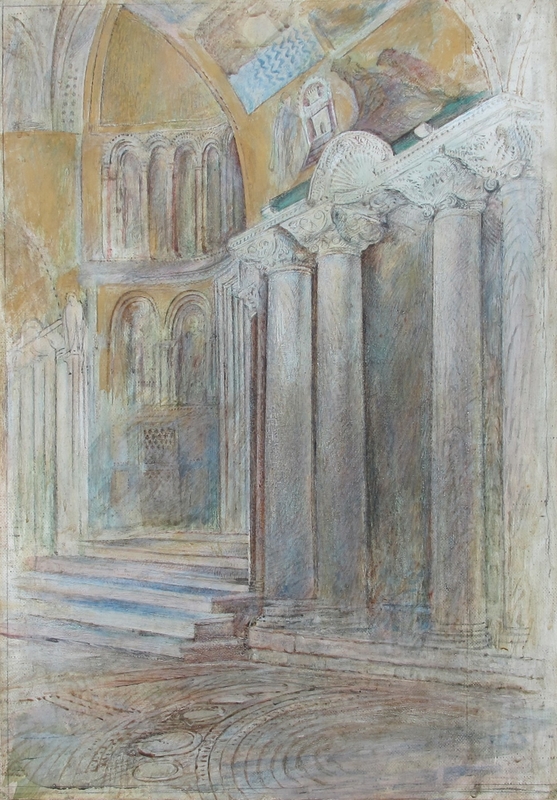
Image credit: Royal Holloway, University of London
Italy: Venice – St Mark’s Basilica, in the Narthex late 19th C–early 20th C
Christiana Jane Herringham (1852–1929)
Royal Holloway, University of London
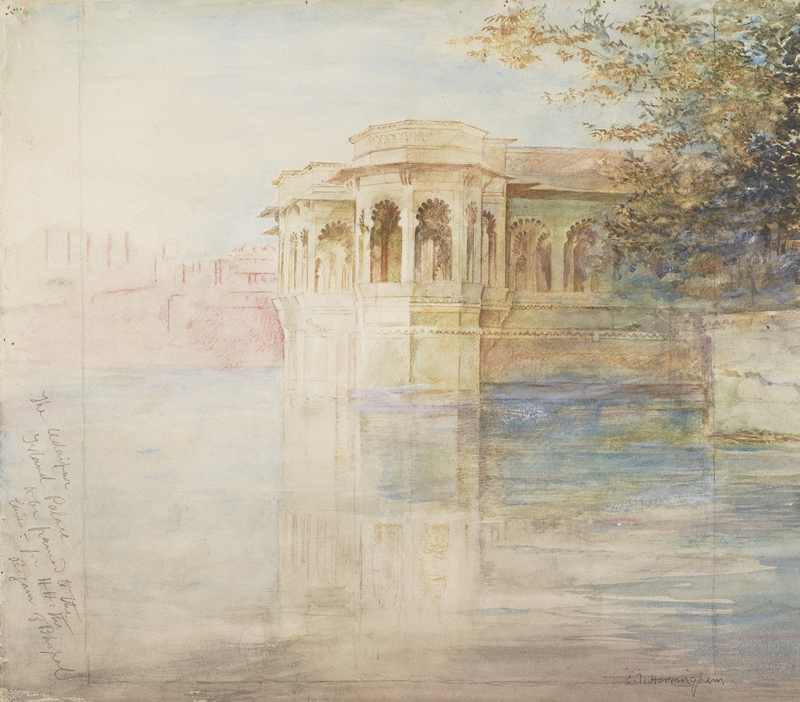
Image credit: Royal Holloway, University of London
India: The Udaipur Island Palace probably 1906–1907
Christiana Jane Herringham (1852–1929)
Royal Holloway, University of LondonShe also used her artistic knowledge to provide advice on restoration to the Society for the Protection of Ancient Buildings (SPAB) and write articles for the specialist art periodical, The Burlington Magazine. The magazine was established in 1903 by a group of art historians, including Herringham's friend, Roger Fry. That same year, Herringham collaborated with Fry, as well as noted critic D. S. MacColl, to establish the National Art Collections Fund (now known as the Art Fund). Herringham donated £200 to cover the organisation's start-up costs.
Having campaigned on the behalf of European art and heritage, Herringham turned her sights to India. Herringham first travelled to the country with her husband during the winter of 1906–1907.
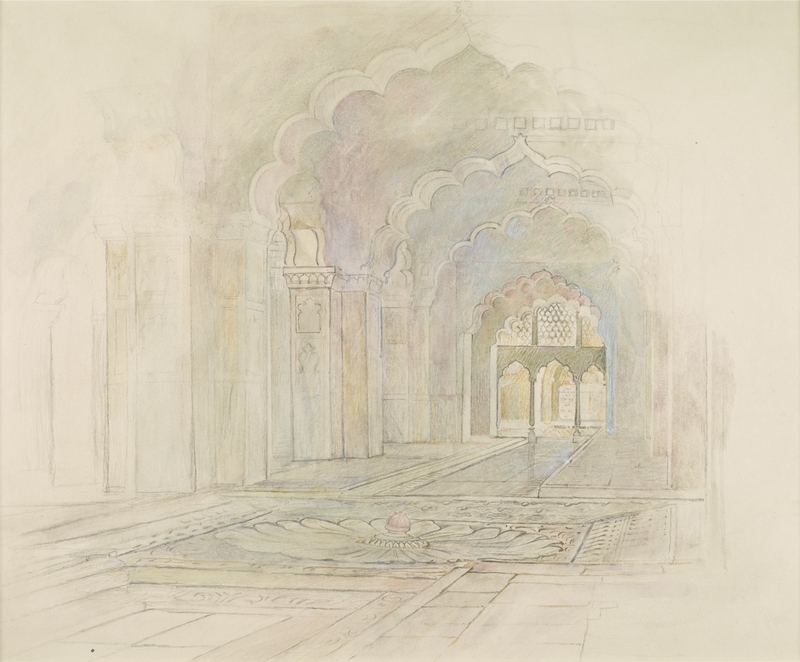
Image credit: Royal Holloway, University of London
India: Delhi – Red Fort, Rang Mahal 1906–1911
Christiana Jane Herringham (1852–1929)
Royal Holloway, University of LondonOn this trip, she encountered the ancient Buddhist frescoes at the Ajanta Caves. Enraptured by their beauty and concerned for their disintegrating state, she decided to return to the country in 1909 to create a record of the paintings by creating a series of copies. She was assisted in her project by a fellow British artist, Dorothy Larcher, and five art students from the Government Schools of Bombay and Calcutta: Nandalal Bose, Asit Kumar Haldar, Syad Ahmad, Muhammad Fazl ud Din, and Samerendranath Gupta.

Image credit: Royal Holloway, University of London
India: Ajanta – Fragment from the Hamsa Jataka 1909–1911
Christiana Jane Herringham (1852–1929)
Royal Holloway, University of LondonHerringham hoped that her copies would not only publicise the beauty of Indian art, but also challenge British assumptions surrounding the superiority of western culture. She wrote articles and gave lectures on Ajanta and sat on the committee of the newly established India Society, which was designed to promote Indian culture. On the completion of the Ajanta project in 1911, the copies were brought back to London, where they were exhibited at the Crystal Palace.

Image credit: Royal Holloway, University of London
Study of Vine with Flowers 1911
Christiana Jane Herringham (1852–1929)
Royal Holloway, University of LondonBut while the project was gaining international attention, Herringham was in the midst of a nervous breakdown. On her return to London she became paranoid – believing that she had offended the Indian people by trespassing at Ajanta, she suspected she was being spied upon and began to fear for her family's safety. In June 1911, as her delusions intensified, she was admitted to a private asylum.
One week after her admittance to the hospital, she drew a small study of a vine. One of the only works she signed and dated; the shakiness of her handwriting reveals the strain she was under.
She never recovered; when Geoffrey was killed in action in October 1914, she failed to process his death. Herringham spent her remaining years in various mental hospitals and died at St George's Retreat, near Burgess Hill, in 1929.
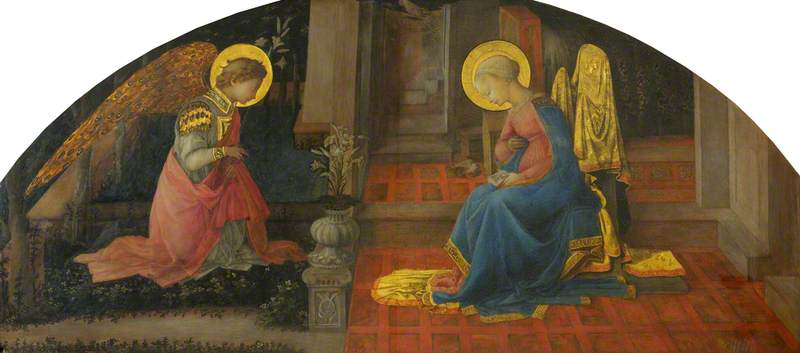
Image credit: Newnham College, University of Cambridge
The Annunciation (copy of Filippo Lippi)
Christiana Jane Herringham (1852–1929)
Newnham College, University of CambridgeFollowing her death, Wilmot chose to bequeath her collection to two women's colleges: Bedford College and Newnham College, Cambridge – a fitting tribute to a woman who had fought so hard to advance women's rights and opportunities. Yet, in the decades following her death, her name was largely forgotten.
In recent years, attempts have been made to correct this. Her work has been included in exhibitions at Tate Britain, Guildford Museum, Two Temple Place, and the University of Cambridge, and in 2019, Royal Holloway held the first solo exhibition of her work in almost seventy years. By publicising and exhibiting her work, it is hoped that Herringham will finally be remembered and given the recognition she deserves.
Michaela Jones, independent researcher
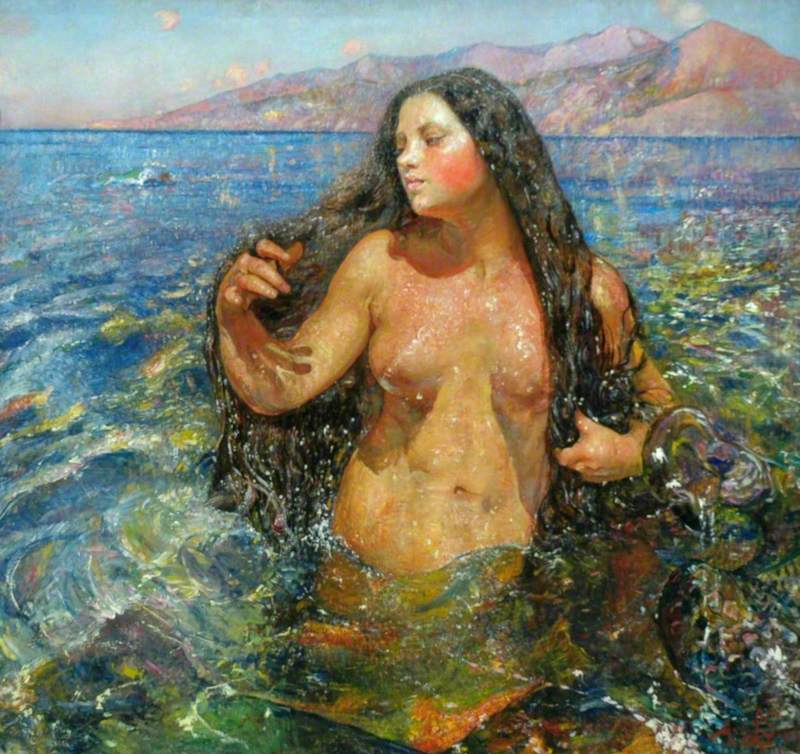

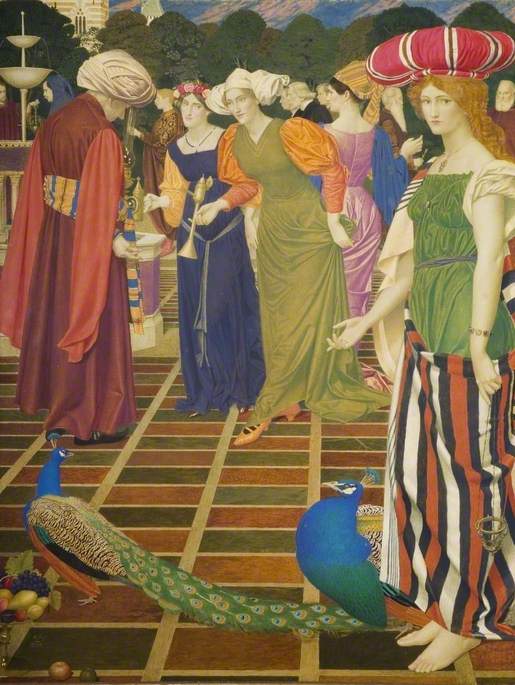
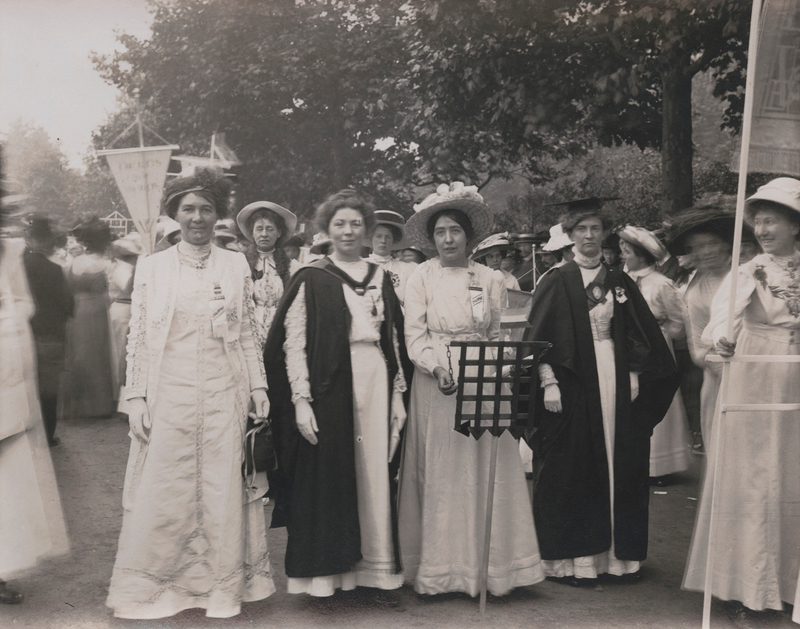

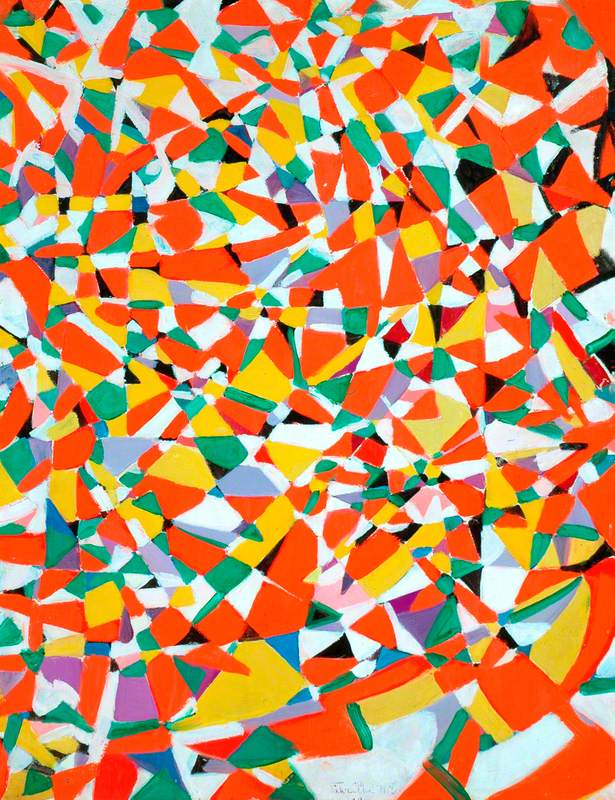
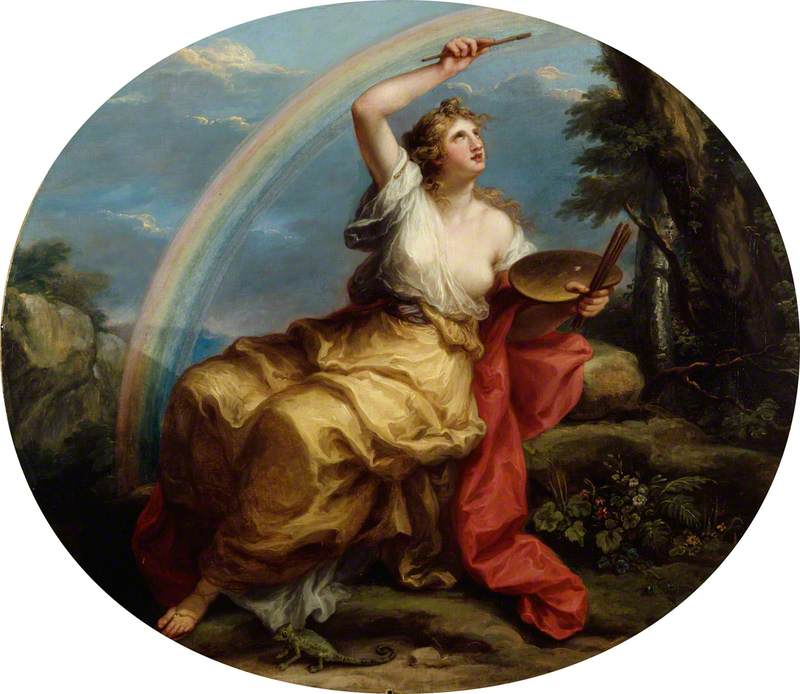
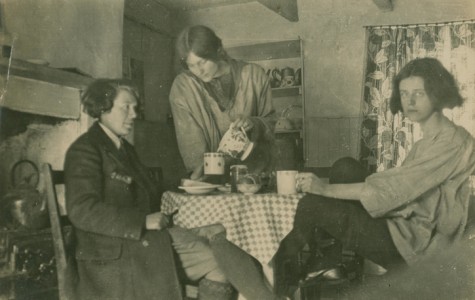


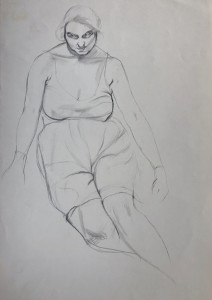
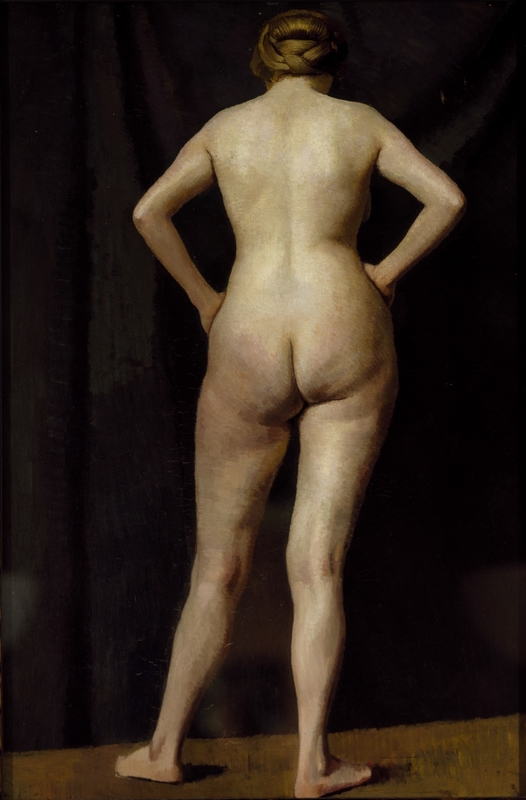
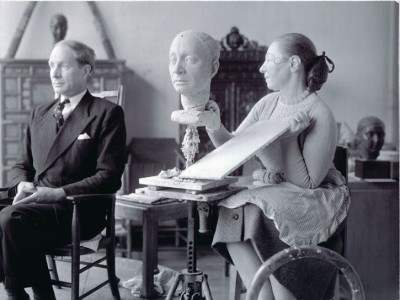
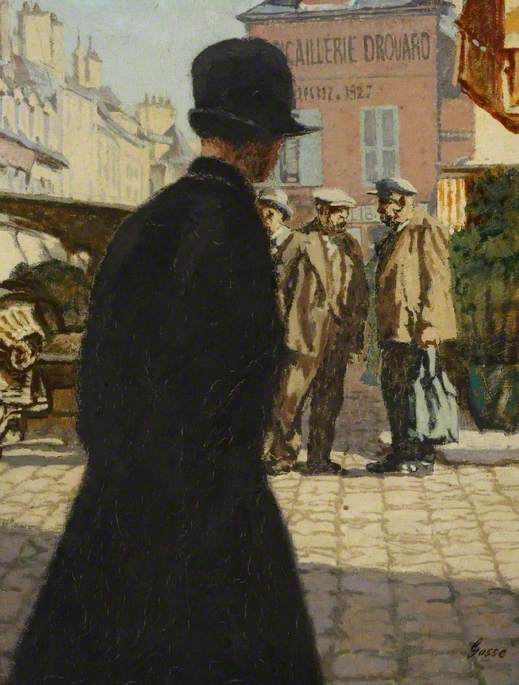
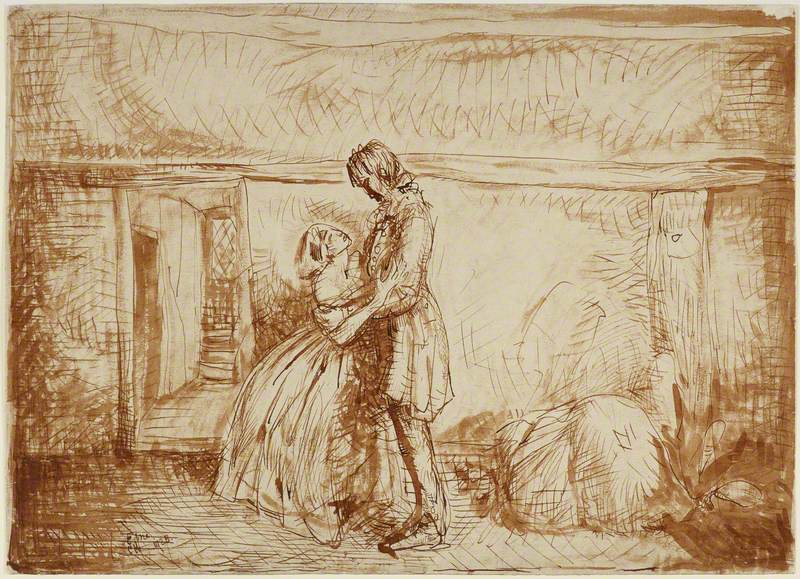
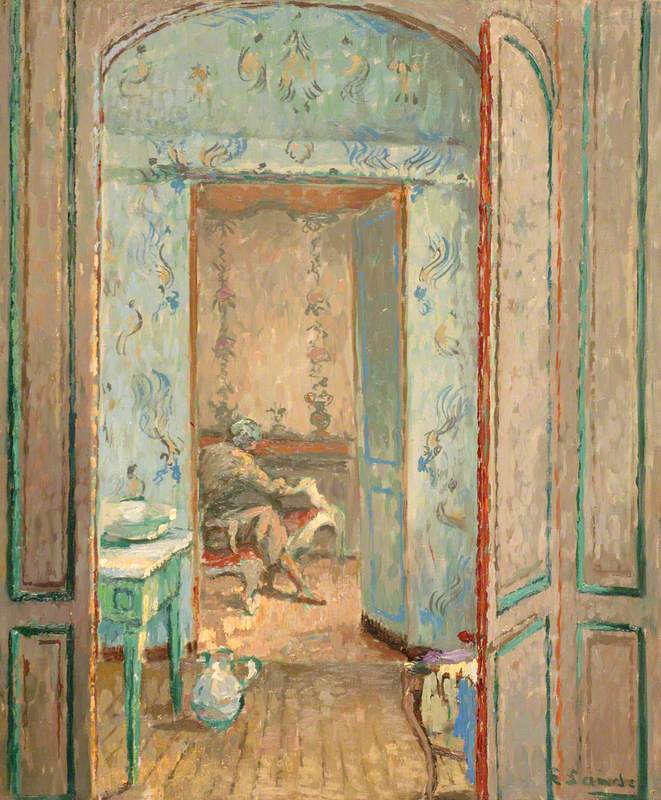
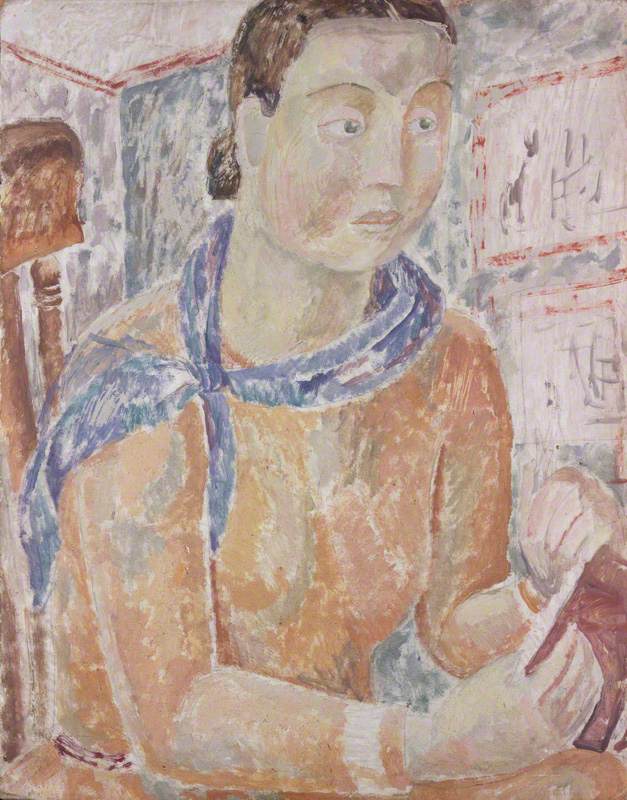
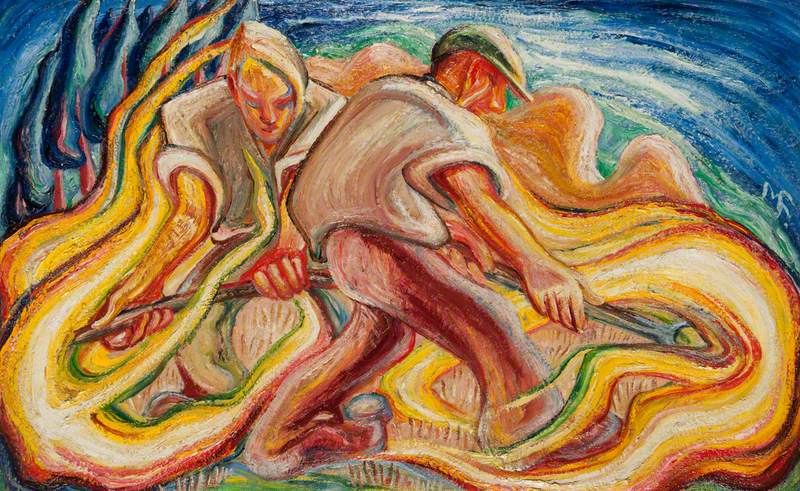

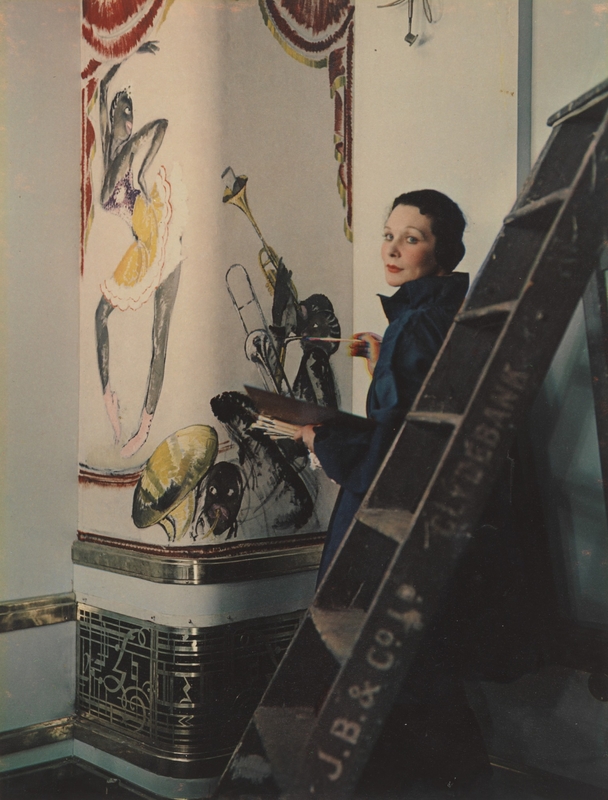



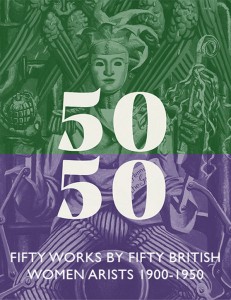




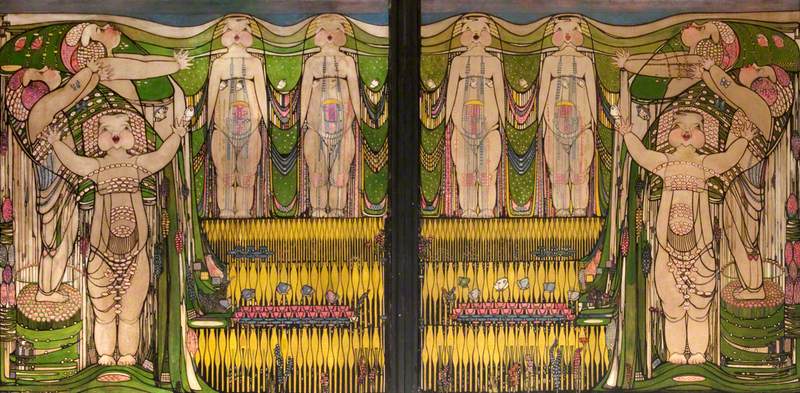
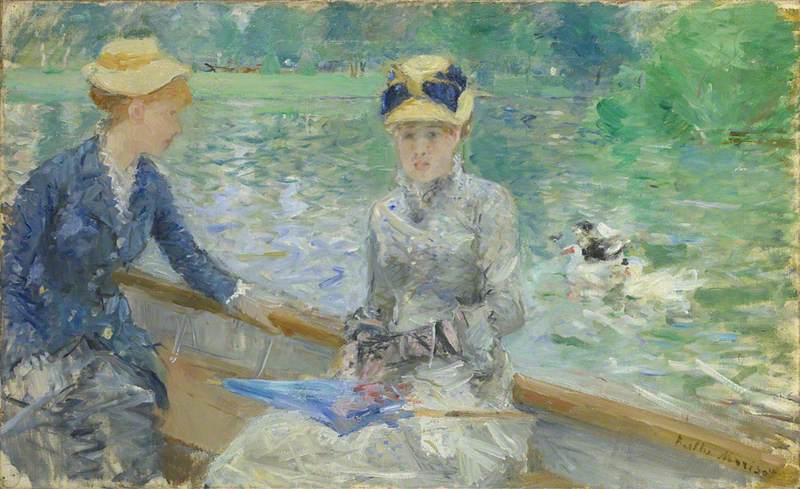
.jpg)
